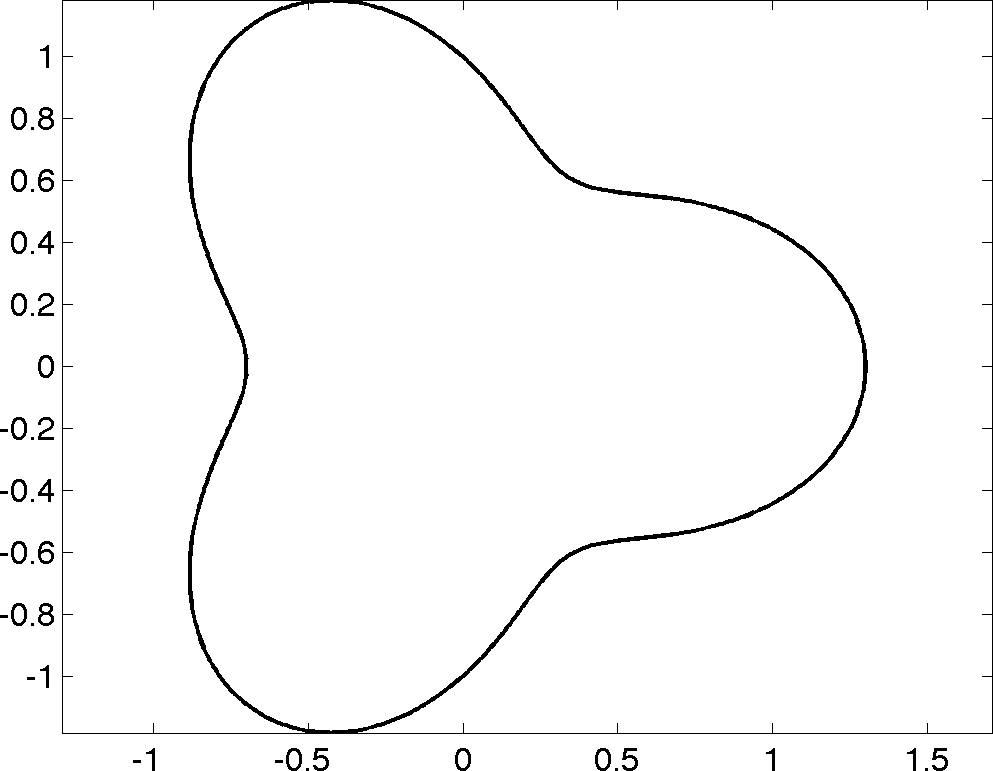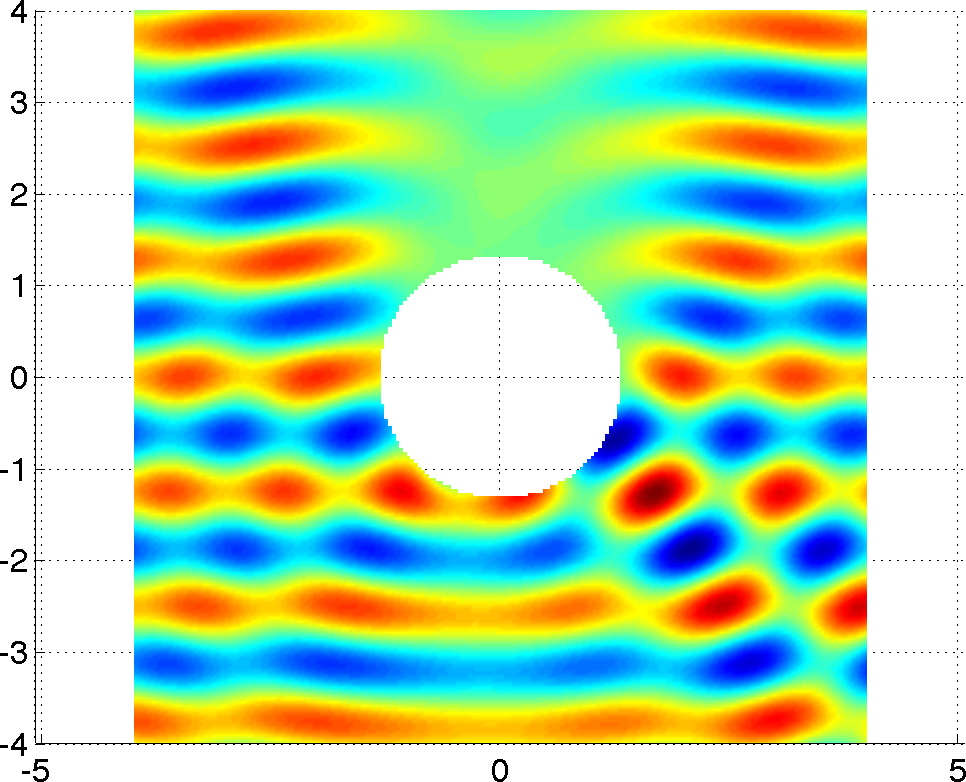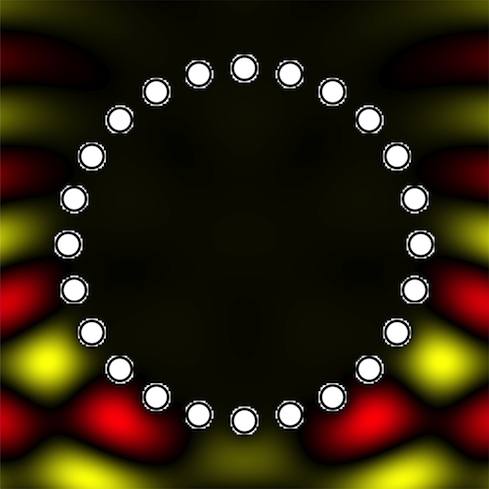
TMATROM
A Matlab Object Oriented T-matrix Toolbox
AboutWave Scattering ToolboxTMATROM is a simple and easy to use reduced order model toolbox for simulating 2D wave propagation
Reduced Order ModelTMATROM provides an easy to use reduced order model for wave propagation based on the T-matrix. The T-matrix provides a low-dimensional highly accurate model for scattering by a particle for all incident waves e.g.
Applications
The user's own single particle scattering software can be easily extended for multiple scattering simulations using the ROM. The ROM provides an instrument for different kinds of solver to talk to each other, allowing easy simulation of multiple scattering in systems with scatterers of mixed kind. Numerical stabilityThe T-matrix is computed with the numerically stable algorithm in [2] using the far field. Rigorous mathematical analysis of the algorithm, including an a priori estimate for the ROM truncation error, was carried out in [3]. Numerical stability was demonstrated in [1] for several kinds of scatterer
A full convergence analysis for the T-matrix ROM is given in [3]. |
|||||||||||||||||||||||||||||||||||||||||||||||||||||||||||||||||||||||||||||||||||||||||||||||||
News
|
|||||||||||||||||||||||||||||||||||||||||||||||||||||||||||||||||||||||||||||||||||||||||||||||||
LicenseTMATROM is free software: you can redistribute it and/or modify it under the terms of the GNU General Public License as published by the Free Software Foundation, either version 3 of the License, or (at your option) any later version. This program is distributed in the hope that it will be useful, but WITHOUT ANY WARRANTY; without even the implied warranty of MERCHANTABILITY or FITNESS FOR A PARTICULAR PURPOSE. See the GNU General Public License for more details. If you use this code, please cite: |
|||||||||||||||||||||||||||||||||||||||||||||||||||||||||||||||||||||||||||||||||||||||||||||||||
Related Publications
|
|||||||||||||||||||||||||||||||||||||||||||||||||||||||||||||||||||||||||||||||||||||||||||||||||
DownloadVersion 2.2 Download all files (including documentation and examples):
Version 1 Download all files (including documentation and examples):
|
|||||||||||||||||||||||||||||||||||||||||||||||||||||||||||||||||||||||||||||||||||||||||||||||||
Contact
|
|||||||||||||||||||||||||||||||||||||||||||||||||||||||||||||||||||||||||||||||||||||||||||||||||
Issues
|
|||||||||||||||||||||||||||||||||||||||||||||||||||||||||||||||||||||||||||||||||||||||||||||||||
ExampleWe use TMATROM to simulate scattering of an incident plane wave by a sound soft scatterer described using polar coordinates (full code).Create a scattererTMATROM provides several standard scatterer shapes eg circles, ellipses.
Other shapes can be created by the user. Here we create a trefoil shape using polar coordinates.
Visualise the scattererOnce created we can visualise our shape.
The result looks like this: 
Setup the solverNext we setup the farfield solver we use to compute the T-matrix. For the trefoil scatterer, which has a smooth boundary, it is appropriate to use a Nystrom solver.
Compute the T-matrixNow we are ready to compute the T-matrix of the object.
Get ROM expansion of the incident fieldWe will use an incident plane wave travelling in the direction (0,1) ie angle pi/2.
Get ROM expansion of the scattered fieldThe scattered field is obtained from the incident field by matrix multiplication with the T-matrix.
Visualise the total fieldFirst we setup a grid on which to plot the total field.
Then the scattered field is obtained from the incident field and the scattered field ROM expansion.
Finally we set the view etc.
The result looks like this: 
Full codeYou can paste the full code into your Matlab command window.
|



